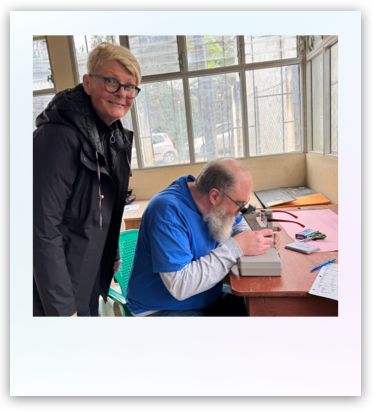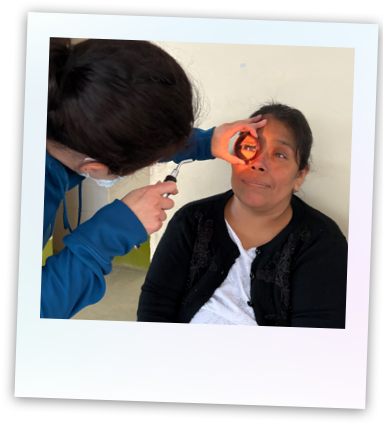January is Glaucoma Awareness Month, and we’re here to shed some light on this stealthy yet potentially vision-threatening condition. Glaucoma is a group of eye diseases that affect the optic nerve. Think of the optic nerve as the unsung hero behind the scenes, responsible for transmitting visual information to the brain. Now, here’s the catch with glaucoma – it tends to be subtle, often creeping in without noticeable symptoms. Understanding what glaucoma is and how it operates is crucial, especially since early detection plays a key role in preserving long-term vision. Keep reading to learn four important facts about glaucoma.
1. There are four main types of Glaucoma
The front part of your eye is filled with a clear fluid called aqueous humor. This fluid leaves your eye through channels where your iris and cornea meet. We call this area the anterior chamber angle, or the angle. Anything that slows or blocks the flow of this fluid will cause pressure to build up in the eye.
First off, we’ve got open-angle glaucoma, which is like the VIP of glaucoma because it’s the most common one. Picture this: the pressure in your eyes builds up over time, which pushes on your optic nerve, causing blind spots in your vision.
Then, there’s closed-angle glaucoma. This occurs when the fluid is suddenly blocked and cannot flow out of the eye. This causes a quick, severe rise in eye pressure. It’s considered an emergency, and if you experience sudden onset of severe unilateral eye pain or a headache associated with blurred vision, rainbow-colored halos around bright lights, nausea, and vomiting is imperative you see an Optometrist as quickly as possible.
Next up, secondary glaucoma. This one happens for a reason, such as if you’re taking certain medications like corticosteroids, or if you’re dealing with eye diseases, diabetes, or you’ve had an eye injury. It’s not the usual suspect, but it can happen.
Lastly, there is congenital glaucoma which occurs in babies when the eye doesn’t develop normally. It is present at birth, and often runs in the family.
2. Glaucoma can be asymptomatic
Glaucoma is often known as the “silent thief of sight” because the most common type, open-angle glaucoma, can show no symptoms and cause irreversible damage and vision loss.
Peripheral vision is the first to be affected and patients may not even know they have lost any of their visual field until it is too late. This is why the best way to treat this sneaky disease is by early detection with comprehensive eye exams.
Now, while open-angle glaucoma prefers the undercover life, other types might give themselves away with some symptoms. Keep an eye out for these symptoms of other types of glaucoma:
- Seeing halos around lights
- Loss of peripheral vision, especially the part of your vision that is closest to your nose
- Intense eye pain, often only in one eye
- Headaches, accompanied by nausea and vomiting
3. Glaucoma can be genetic
Glaucoma has a thing for family tales, ethnicity, and the ticking of the age clock. If your close relatives have dealt with this eye condition, it’s like a neon sign screaming, “Get those regular eye check-ups!” Regular eye examinations help to catch potential issues before they compromise your vision. We use a variety of tools to check for glaucoma such as:
- Visual Field Testing. There are several types of visual field testing that we may perform, but the version most often used is done while your gaze is fixed on a central point directly in front of you to assess what you can see straight ahead, on the sides, and up and down. It can help identify scotomas or “blind spots” in your vision. This test is done with one eye covered (hello pirate eye patch!) and is non-invasive.
- Optical Coherence Tomography. An OCT is an instrument that uses light waves to take high- definition cross-section pictures of your retina’s distinctive layers. This allows your Optometrist to map and measure their thickness, notice abnormalities, as well as monitor any changes to the optic nerve.
- Tonometry. Do you remember that pesky “puff of air” test? Optometrist’s use it to test your intraocular pressure (IOP). We don’t use that equipment in our clinic and opt for a more comfortable handheld device (aka no puff of air). Having high eye pressure does not always mean you have glaucoma, but it gives an important picture of your eye health and can be a sign of optic nerve damage that might affect your sight.
- Gonioscopy. For this test, an Optometrist inspects your eye’s drainage angle (the area where fluid drains out of your eye). During gonioscopy, a special lens is placed lightly on the front of your eye, and a narrow beam of light is directed into your eye while your Optometrist looks through the slit lamp at the drainage angle. It might sound intimidating, but don’t worry! Your eye will be numb, and the test only takes a couple minutes.
4. Glaucoma can be managed
The good news is that glaucoma is a treatable condition. We’ve got a toolbox of treatment options, including prescription eye drops, oral medicines, laser treatment, or surgical procedures to help keep things in check and protect your vision. The key here is regular follow-ups with eye care professionals. These appointments are crucial to adjusting treatments as needed. At Airdrie Family Eye Doctors, we handle every aspect; from diagnosis and treatment to the management of glaucoma.

Understanding more about glaucoma puts the power back in your hands when it comes to your eye health. With regular eye exams and knowing the potential risk factors, we’ve got the map to navigate this condition, giving early detection and intervention the spotlight they deserve. Glaucoma may be silent, but our knowledge and proactive approach can speak volumes in preserving our precious eyesight. Book your comprehensive eye exam today.

























